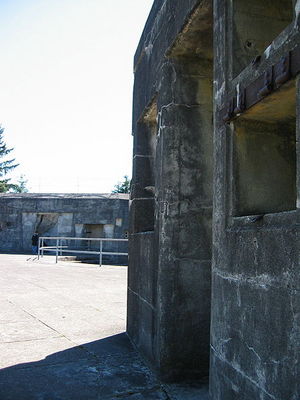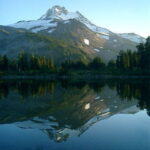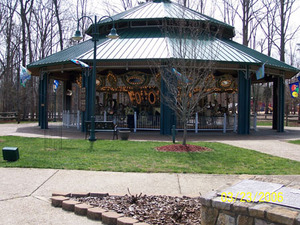If you’re a history buff and love the beach, Fort Stevens State Park on the Oregon coast is a must-see attraction. Fort Stevens is located near Astoria, Oregon, off of Highway 101 (see the park brochure PDF file for a map). It’s open for both day use and camping (state park day use and camping fees apply). Fort Stevens is also only a two-hour drive from Portland, making it an easy day trip from the city.
Fort Stevens’ history spans from the Civil War to the present day. In 1863, the fort was established with earthworks (fortifications made from dirt), buildings, and gun emplacements surrounded by a moat with a drawbridge. Seriously. And why was there a Civil War fort on the Oregon coast, anyway? Well, the U.S. was worried that if England allied itself with the Confederacy (which was a possibility because of the cotton trade), the British might try to attack the U.S. on the Pacific Coast via Canada. Nothing ever happened, of course, but the U.S. military held onto the site. You can view Civil War-era displays in the visitor center at Fort Stevens as well as the remains of the earthworks.
Fort Stevens was re-fortified in 1897 because of the Spanish-American War. These fortifications included eight concrete batteries with mortars and short and long-range rifles. Two forts were also built on the Washington side of the Columbia River at this time: Forts Canby and Columbia.
Shortly after this, in 1906, the Peter Iredale, a four-masted sailing vessel, ran aground on Clatsop Spit on its way to the Columbia River. The vessel was abandoned, and the remains are still visible on one of the beaches in Fort Stevens State Park.
World War II was the period of highest military activity in Fort Stevens history. About 2500 men were stationed there, and extensive barracks were built for them. New gun batteries were also installed. Fort Stevens was even fired upon once by a Japanese submarine, in 1942! This was the only attack on the continental U.S. during World War II, although the fort was undamaged and did not fire back.
The fort was deactivated shortly after World War II, and the property was turned over to the U.S. Army Corps of Engineers. In 1975, it was leased by the Oregon state parks system, and it has continued as a state park to this day.
Visitors can tour the abandoned buildings and gun batteries, as well as a visitor center with historical displays. Brochures are available for an easy to follow self-guided tour, and guided tours are available during the summer season. Parents of young children should be aware that there are steep stairways, ladders, and drop-offs in the fortifications, so children must be supervised carefully.
The World War II barracks are no longer standing, but the foundations are still visible near the visitor center. A Native American longhouse replica is also nearby.
If you’re also interested in outdoor recreation, Fort Stevens has a network of bike trails as well as swimming, boating and picnicking in the Coffenbury Lake day use area (also available to campers).
Fort Stevens has a large campground with both tent/RV spaces and yurts. Camping spaces can be reserved and fill quickly; it’s best to reserve several months in advance. If you’re not able to get a camping spot inside the park, the Astoria/Seaside KOA campground just across the road from the park entrance is a good alternative.
For more information about Fort Stevens State Park, visit the Oregon State Parks website.
SOURCES
Friends of Old Fort Stevens, “History of Fort Stevens”, http://www.visitftstevens.com/history.htm
Oregon State Parks, “Fort Stevens State Park”, http://www.oregonstateparks.org/park_179.php
Wikipedia, “Peter Iredale”, http://en.wikipedia.org/wiki/Peter_Iredale







